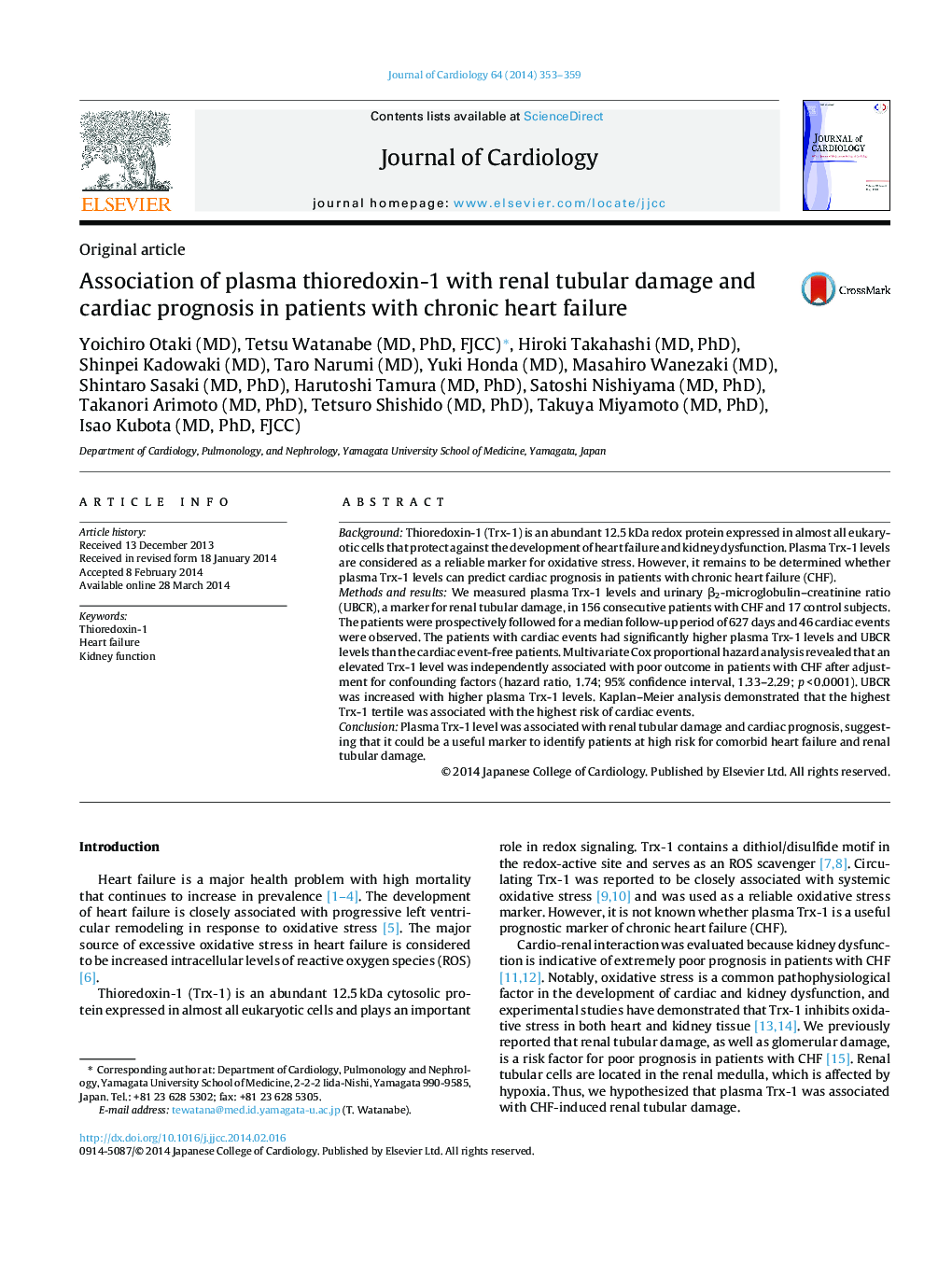| Article ID | Journal | Published Year | Pages | File Type |
|---|---|---|---|---|
| 2963006 | Journal of Cardiology | 2014 | 7 Pages |
BackgroundThioredoxin-1 (Trx-1) is an abundant 12.5 kDa redox protein expressed in almost all eukaryotic cells that protect against the development of heart failure and kidney dysfunction. Plasma Trx-1 levels are considered as a reliable marker for oxidative stress. However, it remains to be determined whether plasma Trx-1 levels can predict cardiac prognosis in patients with chronic heart failure (CHF).Methods and resultsWe measured plasma Trx-1 levels and urinary β2-microglobulin–creatinine ratio (UBCR), a marker for renal tubular damage, in 156 consecutive patients with CHF and 17 control subjects. The patients were prospectively followed for a median follow-up period of 627 days and 46 cardiac events were observed. The patients with cardiac events had significantly higher plasma Trx-1 levels and UBCR levels than the cardiac event-free patients. Multivariate Cox proportional hazard analysis revealed that an elevated Trx-1 level was independently associated with poor outcome in patients with CHF after adjustment for confounding factors (hazard ratio, 1.74; 95% confidence interval, 1.33–2.29; p < 0.0001). UBCR was increased with higher plasma Trx-1 levels. Kaplan–Meier analysis demonstrated that the highest Trx-1 tertile was associated with the highest risk of cardiac events.ConclusionPlasma Trx-1 level was associated with renal tubular damage and cardiac prognosis, suggesting that it could be a useful marker to identify patients at high risk for comorbid heart failure and renal tubular damage.
